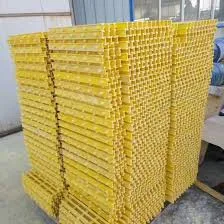
-
 Afrikaans
Afrikaans -
 Albanian
Albanian -
 Amharic
Amharic -
 Arabic
Arabic -
 Armenian
Armenian -
 Azerbaijani
Azerbaijani -
 Basque
Basque -
 Belarusian
Belarusian -
 Bengali
Bengali -
 Bosnian
Bosnian -
 Bulgarian
Bulgarian -
 Catalan
Catalan -
 Cebuano
Cebuano -
 China
China -
 China (Taiwan)
China (Taiwan) -
 Corsican
Corsican -
 Croatian
Croatian -
 Czech
Czech -
 Danish
Danish -
 Dutch
Dutch -
 English
English -
 Esperanto
Esperanto -
 Estonian
Estonian -
 Finnish
Finnish -
 French
French -
 Frisian
Frisian -
 Galician
Galician -
 Georgian
Georgian -
 German
German -
 Greek
Greek -
 Gujarati
Gujarati -
 Haitian Creole
Haitian Creole -
 hausa
hausa -
 hawaiian
hawaiian -
 Hebrew
Hebrew -
 Hindi
Hindi -
 Miao
Miao -
 Hungarian
Hungarian -
 Icelandic
Icelandic -
 igbo
igbo -
 Indonesian
Indonesian -
 irish
irish -
 Italian
Italian -
 Japanese
Japanese -
 Javanese
Javanese -
 Kannada
Kannada -
 kazakh
kazakh -
 Khmer
Khmer -
 Rwandese
Rwandese -
 Korean
Korean -
 Kurdish
Kurdish -
 Kyrgyz
Kyrgyz -
 Lao
Lao -
 Latin
Latin -
 Latvian
Latvian -
 Lithuanian
Lithuanian -
 Luxembourgish
Luxembourgish -
 Macedonian
Macedonian -
 Malgashi
Malgashi -
 Malay
Malay -
 Malayalam
Malayalam -
 Maltese
Maltese -
 Maori
Maori -
 Marathi
Marathi -
 Mongolian
Mongolian -
 Myanmar
Myanmar -
 Nepali
Nepali -
 Norwegian
Norwegian -
 Norwegian
Norwegian -
 Occitan
Occitan -
 Pashto
Pashto -
 Persian
Persian -
 Polish
Polish -
 Portuguese
Portuguese -
 Punjabi
Punjabi -
 Romanian
Romanian -
 Russian
Russian -
 Samoan
Samoan -
 Scottish Gaelic
Scottish Gaelic -
 Serbian
Serbian -
 Sesotho
Sesotho -
 Shona
Shona -
 Sindhi
Sindhi -
 Sinhala
Sinhala -
 Slovak
Slovak -
 Slovenian
Slovenian -
 Somali
Somali -
 Spanish
Spanish -
 Sundanese
Sundanese -
 Swahili
Swahili -
 Swedish
Swedish -
 Tagalog
Tagalog -
 Tajik
Tajik -
 Tamil
Tamil -
 Tatar
Tatar -
 Telugu
Telugu -
 Thai
Thai -
 Turkish
Turkish -
 Turkmen
Turkmen -
 Ukrainian
Ukrainian -
 Urdu
Urdu -
 Uighur
Uighur -
 Uzbek
Uzbek -
 Vietnamese
Vietnamese -
 Welsh
Welsh -
 Bantu
Bantu -
 Yiddish
Yiddish -
 Yoruba
Yoruba -
 Zulu
Zulu
Creating Impact with Powerful Tools and Strategies
The Resounding Impact of the Jackhammer A Tool of Power and Precision
The jackhammer, often seen as a symbol of construction sites and urban renovation, is a powerful tool that has revolutionized the way we approach heavy-duty excavation and demolition tasks. This pneumatic or electric device, which combines a hammer and a chisel, delivers rapid, repetitive blows to break up concrete, asphalt, and other hard materials, making it an indispensable tool in the construction industry. Its origins can be traced back to the late 19th century, yet its relevance in modern construction remains as strong as ever.
The Resounding Impact of the Jackhammer A Tool of Power and Precision
The popularity of jackhammers can be attributed to their versatility and efficiency. From breaking up old pavement to removing concrete foundations, they can tackle a wide variety of tasks, significantly reducing the time and labor required for manual demolition efforts. In urban environments, where speed often dictates project timelines, the jackhammer stands out as an essential piece of equipment. It allows construction crews to work swiftly while minimizing disruption to surrounding areas—a critical factor in densely populated regions.
jack hammer

However, while the jackhammer is a powerful ally in construction, it is not without its challenges. The noise generated by these machines can be immense, often exceeding acceptable sound levels, which can lead to complaints from nearby residents and businesses. Additionally, prolonged exposure to the vibrations produced by jackhammers can pose health risks to workers, including conditions like Hand-Arm Vibration Syndrome (HAVS). To mitigate these risks, contractors must adhere to safety regulations and invest in ergonomic tools and equipment that reduce strain on the operator.
Another critical aspect of the jackhammer's role in construction is its environmental impact. As cities continue to grow and evolve, the demolition process must be balanced with sustainability considerations. Modern advancements in technology and practices have led to the development of quieter, more eco-friendly jackhammers that aim to reduce both noise and emissions. Furthermore, responsible disposal and recycling of concrete and debris have become integral to construction plans, ensuring that the impact on the environment is minimized.
The jackhammer also plays a role beyond construction. In art and urban design, the tool has become a metaphor for progress and transformation. Artists have utilized the imagery of the jackhammer to convey themes of renewal and destruction, showcasing the dual nature of progress in society. As cities strive for modernization, the jackhammer symbolizes the relentless push towards innovation, often at the expense of the old.
In conclusion, the jackhammer is more than just a tool; it represents a formidable force in the landscape of construction and urban development. Its ability to combine power with precision has made it a cornerstone of the industry, facilitating rapid change in our built environment. As we navigate the challenges of modern construction—be it noise pollution, worker safety, or environmental sustainability—the jackhammer will undoubtedly continue to play a pivotal role in shaping the world around us. Its future, like the structures it helps build, will be defined by innovation and a commitment to balancing progress with responsibility.
Latest news
-
High-Quality Fiberglass Car Bodies Durable GRP Car & Boat Body SolutionsNewsJul.08,2025
-
High-Quality Fiberglass Dual Lamination Product Manufacturer Durable FRP & GRP Dual Lamination SolutionsNewsJul.08,2025
-
Rectangular Tank with Dimensions for GRP Calculation Custom Fiberglass GRP Rectangular TanksNewsJul.07,2025
-
High-Quality Fiberglass Weir Custom FRP Weir & Fiberglass Tanks ManufacturerNewsJul.07,2025
-
CPVC FRP Pipe A Reliable Choice for Industrial Applications High Strength & Corrosion ResistanceNewsJul.07,2025
-
Fiberglass Scrubber for Effective Cleaning and Stain Removal – Superior Performance in Various ApplicationsNewsJul.06,2025









